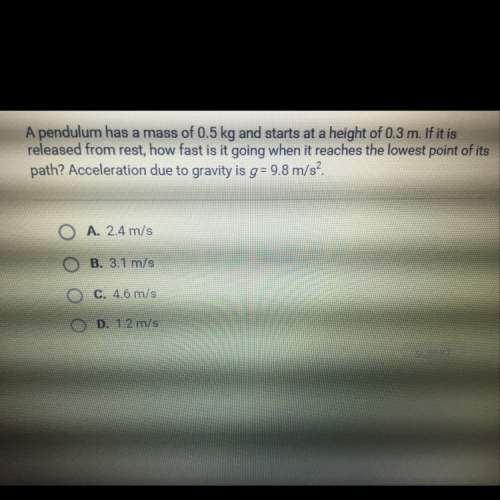
Physics, 31.05.2021 14:00, Jenniferwolf
Warm air is less dense than cold air. The same is true of water. You decide to take a bath and turn on both the hot and cold faucets. When the tub is one-third full, you dip your hand in and discover the water is too cold. You turn the cold water faucet off and keep the hot water turned on. You leave the hot water running for ten minutes. When you return and dip your hand in, you discover that the water in the tub is different temperatures in different places. It is too hot close to the faucet and in a top layer across the entire tub. When you sit down, however, the water in the bottom of the tub is cold. Explain how this happens and why: • how the hot water ended up in a layer on the top and near the faucet. • why this is or is not a transfer of heat. • how the temperature of the water in the tub will change over time. • why you will eventually want to get out of the tub, considering the air and your porcelain enameled steel tub.

Answers: 2
Other questions on the subject: Physics

Physics, 21.06.2019 18:30, samieskyy290
Apassenger walks toward the rear of a moving train. describe her motion as seen from a reference point on the train. then describe it from a reference point on the ground
Answers: 2

Physics, 22.06.2019 07:30, bell777
30 points - when can a theory be modified if a new type of technology allows for new observations that raise new questions? a. immediately, while the questions about the theory are being asked b. after new hypotheses related to the theory are tested in experiments c. only after the new observations disprove all parts of the theory d. while scientists begin to think about how the theory could improve
Answers: 1


Physics, 22.06.2019 10:40, itsyagirl11076
Two point charges are on the y axis. a 3.90-µc charge is located at y = 1.25 cm, and a -2.4-µc charge is located at y = −1.80 cm. (a) find the total electric potential at the origin. v (b) find the total electric potential at the point whose coordinates are (1.50 cm, 0). v
Answers: 1
Do you know the correct answer?
Warm air is less dense than cold air. The same is true of water. You decide to take a bath and turn...
Questions in other subjects:

Mathematics, 22.01.2021 23:50


Mathematics, 22.01.2021 23:50

English, 22.01.2021 23:50

Chemistry, 22.01.2021 23:50


Mathematics, 22.01.2021 23:50


Geography, 22.01.2021 23:50

Mathematics, 22.01.2021 23:50







